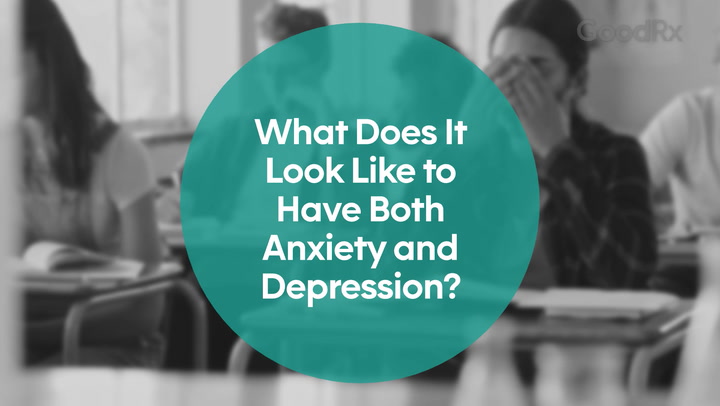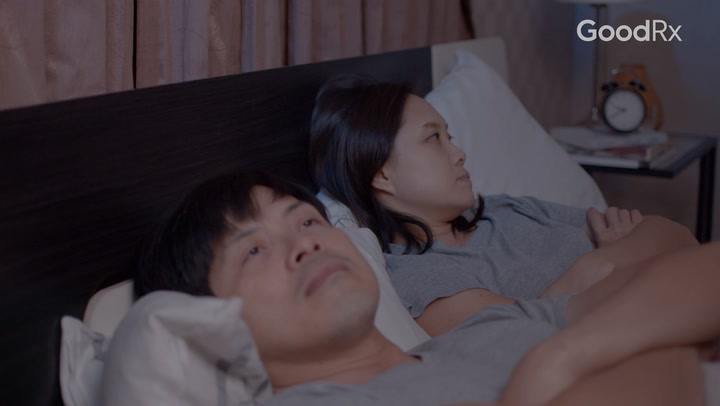
Grounding Techniques for Anxiety to Calm Down Fast
Key takeaways:
Anxiety is a normal human emotion. But when it gets out of control, it can affect your ability to live well.
Grounding techniques are mindfulness-based practices that can counteract anxiety by anchoring yourself in the present moment.
It’s possible you may need additional support for your anxiety if it significantly interrupts your daily life.
Table of contents

You’re not alone if you experience anxiety. In fact, it’s a normal human emotion that can alert us to dangers and threats. But just because it’s a natural part of the human experience doesn’t make anxiety any easier to cope with. If anxiety takes over, it can become difficult to get through the day, let alone reach your goals.
Grounding techniques are mindfulness practices that can reduce anxiety by bringing your awareness to the present moment. These methods can help you get relief fast, by drawing your attention away from the anxiety and helping you feel calmer.
Mental grounding techniques for anxiety
Here are several mental grounding techniques to try when you’re feeling anxious. When possible, don’t wait for the anxiety to become unbearable before you respond. It can be easier to practice these techniques when your symptoms are less severe. And it may prevent your anxiety from getting worse.
Search and compare options
These skills can be practiced every day, whether anxiety is present or not. With daily practice, your chosen technique will already be familiar to you when you do start to feel anxious.
5-4-3-2-1
The 5-4-3-2-1 technique uses your five senses to calm anxious thoughts and reconnect with the present moment. By focusing on what your senses are taking in, you can get a break from worrisome thoughts and enjoy your surroundings.
Here’s how to practice the 5-4-3-2-1 grounding technique:
Five things you can see: Start by looking for five things you can see. Maybe it’s a cloud moving in the sky or the wrinkles on your knuckles. Take your time to look around you and really see what you’re looking at.
Four things you can touch: Next, notice four things that you can touch or feel. This might be the smooth feeling of a pen in your hand or the weight of your feet against the ground.
Three things you can hear: Now, pay attention to three things that you can hear. Whether it’s the sound of laughter, the buzz of distant traffic, or birds singing outside your window, notice the sounds that surround you.
Two things you can smell: When you’re ready, notice two things that you can smell. This could be the scent of your clothing, the air around you, or your pet’s fur.
One thing you can taste: Lastly, bring your awareness to one thing that you can taste. Maybe it’s the lasting notes of something you recently ate, the sweat on your upper lip, or the inside of your mouth.
3-3-3
Similar to the 5-4-3-2-1 method, 3-3-3 is an easy-to-remember grounding technique that engages your senses and connects you with the here and now.
Here’s how to do the 3-3-3 grounding technique:
Notice three things you see.
Notice three sounds you hear.
Move three parts of your body. (This could involve stretching your fingers really long, shaking your legs, or raising your arms above your head.)
Read more like this
Explore these related articles, suggested for readers like you.
Leaves on a stream
Anxiety can send your thoughts and worries swirling around in your mind. When this happens, try the “leaves on a stream” technique:
Place your feet on the ground and feel the earth beneath them.
Begin to watch your thoughts as if they’re outside of you.
Imagine your thoughts are leaves floating around in the wind and gently landing on a stream.
Allow each thought to become a leaf that flows down the stream and away from you.
RAIN
Developed by meditation teacher Tara Brach, RAIN is an acronym that stands for:
Recognize
Allow
Investigate
Nurture
Here’s how the RAIN grounding technique works:
Recognize: Start by noticing that you’re having a tough time. This might be as simple as saying, “I’m starting to feel anxious.”
Allow: This next step is about giving yourself permission to have that feeling.
Investigate: Begin to get curious. You may ask yourself, “How does the anxiety feel in my body?” or “What do I need?”
Nurture: The final step is about being gentle and kind with yourself, offering yourself what you need, and maintaining a sense of self-compassion. You can do this using self-care, such as taking a break from what’s causing your stress, taking a cool shower, or getting coffee with a friend.
Dropping anchor
Developed by Dr. Russ Harris, dropping anchor involves the acronym ACE. This stands for:
Acknowledging your thoughts and feelings
Coming back into your body
Engaging with the world around you
Start by noticing your thoughts and feelings and how they affect you. Name any familiar thought patterns that arise, like “I’m not good enough” or “I’m feeling abandoned.”
Then, bring yourself back into your body by:
Pushing your feet firmly into the ground
Straightening your spine
Pushing your fingers together or rubbing your palms
Once you’re connected to your body, notice your surroundings. This could include noticing who’s around and what sounds or smells are in your environment. This can be done once or as many times as you need.
Body scan
A body scan is a way to connect to your physical experience in the present. It can last from a few seconds to more than an hour. Simply put, it’s a way of moving your attention through your body, from the top of your head to the bottom of your feet (or vice versa). It can be done as a self-guided practice or by following a recording, like this 3-minute body scan audio recording from UCLA Mindful.
Here’s how to do a body scan on your own:
Start with your feet. Focus on your feet and notice any sensations you feel.
Move up your body in this manner. After your feet, focus on your calves. Then focus on your knees, thighs, butt, and so on.
Go slowly and try not to judge what you feel — just experience it.
Visualization
When you feel anxious, visualization can help. Visualization is simply making pictures in your mind. This distracts your mind from anxious thoughts. It can make you feel more relaxed and in control.
To practice visualization:
Close your eyes and picture a safe, calm place, like the ocean, the forest, or a friend’s kitchen. It can be any place where you normally feel content and at ease.
Imagine the sights, sounds, and smells.
You can “stay” in this place for as long as you need, until you feel your anxiety start to ease up.
What does an anxiety attack feel like? Three people describe their personal experiences and symptoms.
How to break the anxiety cycle: When something makes you anxious, it’s natural to avoid it. But in the long run, this can make your anxiety worse. Learn ways to break the cycle.
What’s making you feel so anxious? Anxiety can be caused by many different things. Read about the common causes of anxiety, including anxiety disorders, medications, and lifestyle choices.
Physical grounding techniques
Physical exercises can help you regain control when you’re feeling anxious, too. This could mean simply changing your breathing patterns. Or, it could be a more involved activity, like dancing, walking, or doing yoga.
Let’s take a closer look at some physical grounding techniques to try.
Breathing exercises
Breathing exercises can help you get out of your mind and into your body in the present moment. The way you breathe can also lead to changes in the brain and body that promote relaxation. Focusing on the breath in moments of high stress can also lessen feelings of anxiety.
Breathing exercises include:
Slowing your breathing down
Practicing alternate nostril breathing
Counting your breaths
Diaphragmatic breathing, which involves taking deep breaths into the abdomen, has been shown to lessen anxiety after 8 weeks of practice.
Stretching and yoga
Stress and anxiety can take hold in the body. When you stretch your body or practice yoga, you can release physical and emotional tension. It’s also an opportunity to notice how your body feels.
A small study suggests that practicing yoga for 6 months can lessen anxiety symptoms. Whether it’s your hands gliding through the air, your calf muscles loosening, or your jaw relaxing, you can start to develop full-body awareness and get relief from your mental thunderstorms when practicing yoga.
If you want to try yoga or stretching, you can search for a guided recording or video online, such as on Google or YouTube. You can even find exercises with anxiety grounding techniques.
Mindful walking
Walking can be relaxing and meditative. Mindful walking, a practice of deliberately going slowly and noticing how you walk, can also offer relief from anxious thoughts. If you can’t go outside, you can try walking across the room.
Here’s how you can start mindful walking:
Breathe: First, take a few slow, deep breaths.
Tune in to your body: When you’re ready, draw your awareness to your legs, ankles, and feet. Notice how your legs feel. Pay attention to your feet against the ground.
Start walking: Pick one foot up and take a deliberate step. Notice how your feet and legs move. Shift your weight and allow your other foot to rise and step forward.
Repeat: Follow this cycle for 10 to 15 paces, moving slowly with the rhythm of your body.
Refocus: When your mind begins to wander, gently guide your attention back to your legs and feet moving across the ground.
Rhythmic movement
Dancing is not only fun, but it’s also a way to connect to your body. If you’re feeling shy, there’s no shame in having a dance party alone in your room. You can also gently sway to a beat or even create your own beat with your hands on a table or your lap.
Rhythm is grounding because it directs you to the here and now. More than just dancing or swaying, you can connect to rhythm through singing, making sounds, or playing a musical instrument.
Holding ice
The cold sensation of ice can quickly bring you back in touch with your body. You can move the piece of ice from hand to hand or rub it across your forehead or leg. If it’s too cold, wrap the ice in a towel. Pay attention to how each sensation feels. Notice how your body responds.
When should you use grounding exercises?
You can use grounding exercises any time you want to feel more calm and relaxed. Grounding exercises help you focus on the present moment. This helps you feel less anxious and less stressed. Grounding exercises can also help relieve physical symptoms of anxiety, like a racing heart or problems catching your breath.
Here are some situations where a grounding exercise could help:
You’re about to take a big test, and you’re feeling nervous.
You just got some bad news.
You’re having a panic attack or an anxiety attack.
You’re about to deliver a speech or presentation.
You’re worried about getting a good night’s sleep.
You’re in the middle of a stressful argument.
You’re going to a new place or meeting new people.
You’re feeling overwhelmed and having trouble focusing.
Why do grounding techniques help to calm you down?
Anxiety pulls you out of the present moment. This could happen when your mind starts reeling with countless possible scenarios, “what ifs,” and potential problems in the past or future. This can trigger the amygdala in your brain to sound an internal alarm. Then, it triggers a cascade of changes in your body, including a faster heart rate, rapid breathing, and muscle tension. In turn, these physical responses tend to heighten your anxiety even more.
Grounding techniques can ease anxiety by drawing your attention away from swirling thoughts or emotions and into your body or current environment. What’s more, grounding practices can usually be done in any situation without added financial cost.
What should I do if my anxiety persists after trying several grounding techniques?
If your anxiety continues to affect you even after trying several of these grounding techniques, there are other self-management strategies that you can try. These include:
Talking to a family member or friend
Breaking big tasks into smaller steps
Making time to decompress
Getting enough sleep
Exercising
Helping someone in need
If your anxiety interferes with your ability to live a fulfilling life, you may want to get evaluated by your primary care provider or a mental health professional.
There can be physical or mental health issues that lead to symptoms of anxiety. A checkup with your healthcare professional can uncover whether or not this is the case with you. A mental health provider can also evaluate you for an anxiety disorder, which is often treatable with therapy, medications, or a combination of the two.
The bottom line
Grounding techniques can be powerful coping skills to practice when you’re struggling with anxiety. Rooted in mindfulness, grounding strategies — such as 5-4-3-2-1 and RAIN — can move your attention away from anxious thoughts and fears and, instead, anchor your body in the present moment. But not every grounding strategy will be the right fit for every person. So, experiment with different strategies to find out what works for you.
Why trust our experts?



References
Aubrey, A. (2020). Feeling anxious? Here's a quick tool to center your soul. NPR.
Call, D., et al. (2013). Effectiveness of brief mindfulness techniques in reducing symptoms of anxiety and stress. Mindfulness.
Chen, Y. F., et al. (2016). The effectiveness of diaphragmatic breathing relaxation training for reducing anxiety. Perspectives in Psychiatric Care.
Chevalier, G. (2015). The effect of grounding the human body on mood. Psychological Reports.
De Tord, P., et al. (2015). Grounding: Theoretical application and practice in dance movement therapy. The Arts in Psychotherapy.
Goyal, M., et al. (2014). Meditation programs for psychological stress and well-being: A systematic review and meta-analysis. Journal of the American Medical Association Internal Medicine.
Hamasaki, H. (2020). Effects of diaphragmatic breathing on health: A narrative review. Medicines.
Harris, R. (2019). ACT made simple: The extra bits.
Mirgain, S. (2016). A body scan script. Veterans Health Administration.
Ressler, K. J. (2011). Amygdala activity, fear, and anxiety: Modulation by stress. Biological Psychiatry.
Sahasi, G., et al. (1989). Effectiveness of yogic techniques in the management of anxiety. Journal of Personality and Clinical Studies.
University of California Los Angeles (n.d.). Guided meditations. UCLA Mindful.
University of California San Francisco Department of Psychiatry and Behavioral Sciences. (2021). Deep breathing: A fundamental part of stress reduction [video]. YouTube.
Village, B., et al. (2015). Self-management strategies in recovery from mood and anxiety disorders. Global Qualitative Nursing Research.
Zantow, J., et al. (2021). Limiting stress through grounding and breathing techniques. IdeaFest.
For additional resources or to connect with mental health services in your area, call SAMHSA’s National Helpline at 1-800-662-4357. For immediate assistance, call the National Suicide Prevention Lifeline at 988, or text HOME to 741-741 to reach the Crisis Text Line.





























